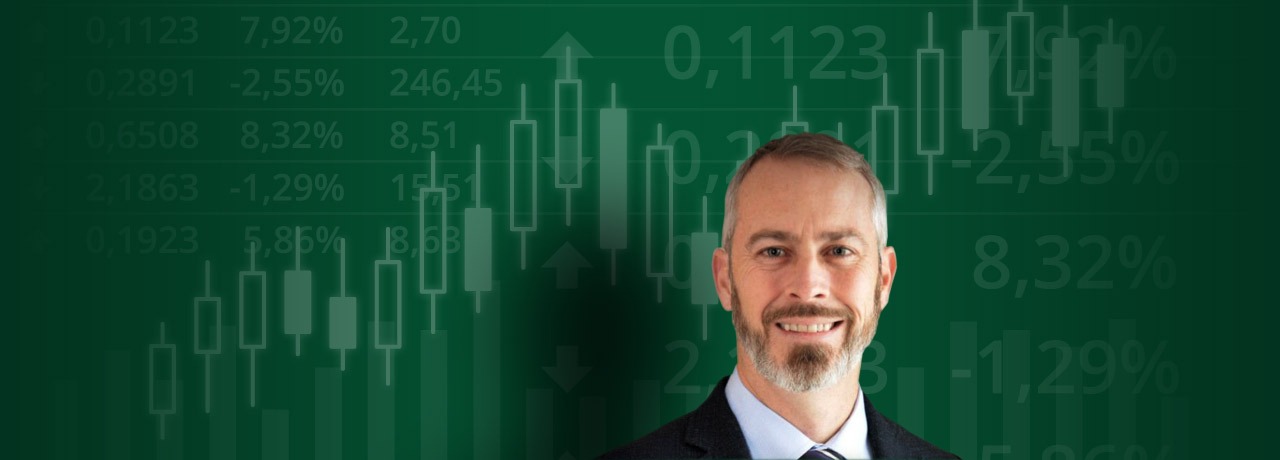Trading is a funny thing. There are times when the reasoning behind a market's actions are spot on. There are times when the reasoning turns out to be wrong yet the directional prediction holds fast. Finally, there are times when the reasoning is dead right and the market does the exact opposite of what was expected. It appears that our September through October forecast was directionally solid. However, based on the data I've compiled over the last week, I believe the jump in volatility has merely shaken things up, rather than signaled a major change in market sentiment.
We began to broadcast the warning signs of a stock market correction upon noticing a very peculiar but telling sign in the expiration of the September S&P 500 contract. We published, "Commercial Selling Tips S&P 500 Bias" at Equities.com in late September and followed up with, "Commitment of Traders Report Returns S&P 500 to 1900" on October 1st. Obviously we were a little short-sighted in our downside objective but, it was clear that sentiment had turned negative among the commercial trader category. Furthermore, our research has shown the importance of tracking their behavior as genuine market movers and pivot point generators. Their trading abilities consistently place them at the top of the heap.
Examining the aftermath of October's decline leads us through the typical chain of events upon an expansion of volatility. The trading game involves taking advantage of what is offered, when it is offered. This means selling put options on the S&P 500 when the market tanks. Although counter intuitive as it may seem, this has been a proven money maker over the course of my trading career. The only real downside is that volatility spikes are unpredictable in their occurrence. That makes this strategy a tool, rather than a living and leaves us looking for the next trade.
Reassessing the post panic landscape makes one notion in particular crystal clear. The commercial traders viewed the volatility as an opportunity to employ counter move strategies that suggest the market may be returning to its former levels. I analyzed the open interest structure in seven different but inextricably related markets and found that these three thoughts should guide me going forward. First, the S&P 500 futures continue to dominate the equity investor's opportunities. Secondly, the yield curve is changing its shape. Lastly, the gold market is trading of its own accord.

We'll look at the yield curve, first. Commercial traders had been altering their positions to reflect the new forms of European Central Bank (ECB) Quantitative Easing (QE). The stimulus they're putting in place will drive down short-term yields. We are seeing this take place in the most liquid of short-term yield instruments, the Eurodollar. Open interest has declined more in the Eurodollar complex than anywhere else in the interest rate sector. I believe there are two reasons for this. First of all, Eurodollars as a financial instrument, are bound by a price ceiling of 100.00 which would reflect 0% interest. The recent rally provided a punch upwards through the resistance allowing profit taking on long positions. Regardless of the reason for their inception, this rally provided a profit taking opportunity. Secondly, many small speculators have been short this market based on inflationary notions among small investors who can trade the Eurodollar for low margins and minimal net liquidation value fluctuation. I believe that next week's Commitment of Traders report will show a marked decline in small speculator net short positions. This is a classic interaction as small traders get washed out by commercial traders taking the other side of the trade. We expanded on this in, "Commitment of Traders Report Caps Eurodollar Rally."
Moving to the middle of the curve and the 10-year Treasury Note, we see the one issue that's attracting new money. The rise may be nominal but, relative to the losses in both the Eurodollar and the 30-year Treasury Bond, I believe the 10-year's gains are notable. The 10-year is still providing a positive inflation adjusted yield in a declining yield environment. When this is combined with the predicted strength of the US Dollar relative to the Euro currency due to the eastern migration of QE we can see that institutional investors are betting on a climb in price of the 10-year Treasury Note along with locking in what yield is currently available. Clearly, this is viewed as the, "sweet spot." This can be verified through the decline in the open interest in both the Eurodollar which we've already discussed and 30-year Treasury Bond. The farther out the maturity date, the more volatile its potential. Clearly, 30 years is farther than anyone cares to predict at this point. You can see on the recent yield curve pulled from the Federal Reserve Board that the current yield on the 10-year Treasury Note of 2.23% is better than the Philadelphia Fed's one year inflation outlook of 2.1% but only marginally better than their ten year inflation outlook of 2.2%. The yield curve is building a hump in the middle. Will it invert on a slowing global economy?


The bond action or, lack of it, brings us back to the stock market. As clearly as we saw the sell off coming, I think we missed the notion of this being a buying opportunity. Looking just at the open interest story I expected to find one of two things. What I ended up with was a third that is re-shaping my outlook into the final quarter. Typically, when the stock market sells off by 10% in a month (S&P500 2014.50 top on September 19th), I expect to see open interest either decline due to profit taking or, swell due to the execution of new short positions as protection for previous equity gains. Obviously, in the S&P 500, we found neither. Perhaps, the market didn't sell off far enough to bring in the small specs on the buy side. Perhaps, the small speculators don't feel a major top is forming. Either way, their actions as measured through the mini S&P 500 futures was negligible even if the decline in the Dow and Nasdaq do provide some anecdotal small market confirmation.
The story among the small specs may be confusing but the commercial traders have been much more assertive. Measuring the change in open interest in the mini S&P 500 shows an absolutely inconsequential change. However, measuring the change in the full size S&P 500 shows another story altogether as commercial and institutional traders increased their positions by nearly 17% on this pullback. I believe that part of it is based on the US equity markets being the most liquid markets in the world and the head that wags the global traders' tail. I also believe that many small traders simply got lost in the hyperbole of the "MARKET CRASH" announcements incessantly spewed out by TV pundits more interested in being remembered than they are in being right the market. Therefore, many of them missed the simple chart below.

As October comes to a close, many people will no doubt file it away as, "October is always a bad month in the stock market." Consider that most people are mostly wrong when it comes to trading. The truth is that September is the quantifiable weakest month for the stock market. Most people being mostly wrong is mostly right when it comes to market analysis. The commercial trader group in the Commitment of Traders report tipped us off to the pending weakness in equities and their assertive actions have clearly shown that they believe this to be a buying opportunity. Collectively, they'll all have their reasons but off the top of my head, fewer US Dollars going into gas tanks should lead to a brighter holiday shopping season. Furthermore, if the European version of QE has anywhere near the same effect on European markets as the US version had on ours, it's quite possible that the next move is simply a continuation of equity rallies based on sovereign bank intervention preventing free markets from working out their own risk and reward scenarios.





